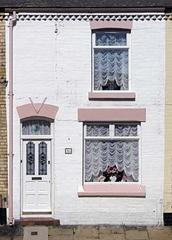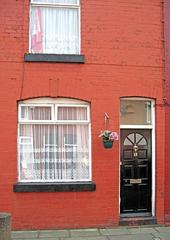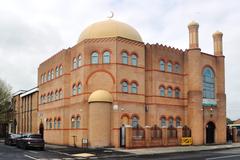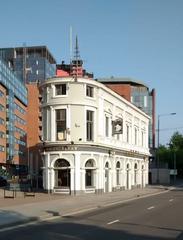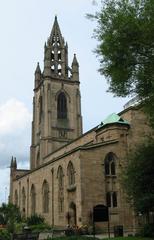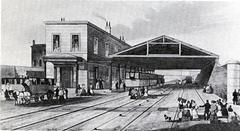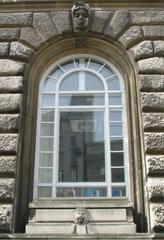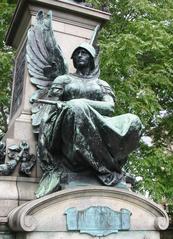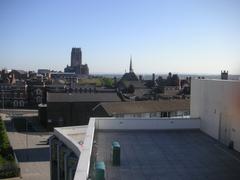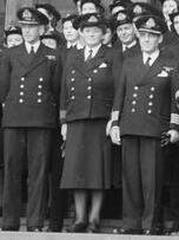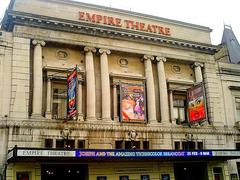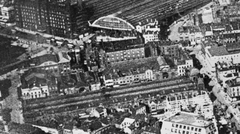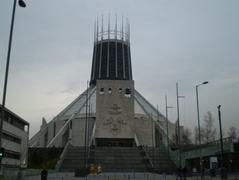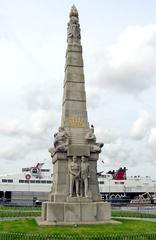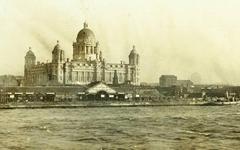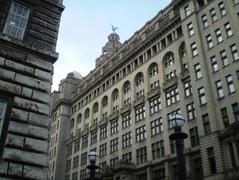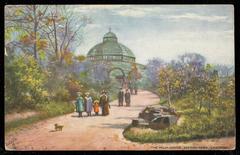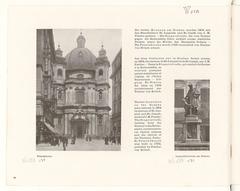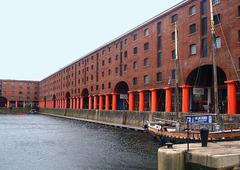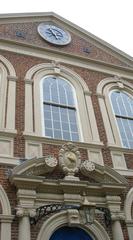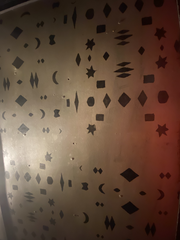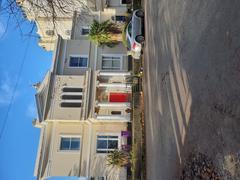Unity Buildings Liverpool: Visiting Hours, Tickets, and Historical Sites Guide
Date: 04/07/2025
Introduction to Unity Buildings Liverpool
The Unity Buildings are a striking emblem of Liverpool’s architectural renaissance, embodying the city’s journey from its industrial roots to a vibrant, cosmopolitan hub. Located on Chapel Street, just steps from the iconic Liverpool waterfront and adjacent to landmarks like the Royal Liver Building, these twin towers—completed in 2007—represent a fusion of innovative design and historical context. Designed by Allford Hall Monaghan Morris (AHMM), the Unity Buildings consist of a 27-storey residential tower and a 16-storey office tower, each contributing to Liverpool’s evolving skyline and urban identity (Wikipedia; AJ Buildings Library).
This guide delivers a detailed overview of the Unity Buildings: their history, architecture, visitor access, practical tips, and nearby cultural attractions. Whether you’re a fan of contemporary design, a history enthusiast, or a curious traveler, this article will help you make the most of your visit to Liverpool’s waterfront and its modern icons.
Table of Contents
- Introduction
- Historical Development and Urban Context
- Architectural Design and Features
- Cultural and Urban Significance
- Notable Incidents and Public Perception
- Visiting the Unity Buildings: Hours, Tickets & Tips
- Visuals and Interactive Resources
- Frequently Asked Questions (FAQs)
- Conclusion
- References and Further Reading
Historical Development and Urban Context
The Unity Buildings were completed in 2007 as part of Liverpool’s city center regeneration, exemplifying the city’s shift from a maritime trading hub to a modern, forward-thinking metropolis (Wikipedia). Originally envisioned as the much taller “Capital Exchange” tower, the final Unity scheme was designed to better integrate with Liverpool’s evolving skyline. Their location, adjacent to the historic Royal Liver Building and on the edge of the former UNESCO-listed waterfront, creates a dynamic dialogue between old and new, reflecting Liverpool’s layered architectural history (Only in Liverpool).
Architectural Design and Features
Design Philosophy and Architects
Allford Hall Monaghan Morris (AHMM) approached the Unity Buildings with a vision for mixed-use, high-density living at the city’s heart. The complex consists of two distinct yet interconnected towers: Unity Residential (27 storeys, 86m, 162 apartments) and Unity Commercial (16 storeys, 64m, 15,000m² of office space). A sunken public plaza, designed in collaboration with muf architecture/art, links the buildings and provides communal outdoor space (AJ Buildings Library).
Structural and Material Innovation
The residential tower employs tunnel-form construction for strength and efficient apartment layouts, while the office tower utilizes a flexible framed structure. Both towers sit atop specialized foundations, engineered for Liverpool’s challenging ground conditions and adjacent infrastructure. The façade features a checkerboard pattern of colored panels, drawing inspiration from World War I “Dazzle Ships”—a nod to Liverpool’s maritime heritage (Liverpool Echo; Architects’ Journal).
Recognition and Awards
In 2007, the Unity Buildings received the Royal Institute of British Architects (RIBA) annual tall buildings award, commended for their sensitive integration of contemporary design within Liverpool’s historic context (Liverpool Echo).
Cultural and Urban Significance
Symbolism and Urban Identity
The Unity Buildings symbolize a city embracing the future while honoring its past. Their mixed-use nature aligns with modern urban development, encouraging vibrant, round-the-clock activity. The whimsical penthouse—sometimes called the “Portakabin”—is beloved in local lore, underscoring the buildings’ unique personality (Architects’ Journal).
Integration with Liverpool’s Heritage
While not heritage-listed themselves, the Unity Buildings sensitively complement their historic surroundings, particularly the adjacent Royal Liver Building. Their presence signals Liverpool’s commitment to regeneration that respects, rather than replaces, the city’s rich built environment (Listed Buildings Insurance; Only in Liverpool).
Notable Incidents and Public Perception
In 2014, a façade panel detached due to high winds from Hurricane Gonzalo, prompting brief street closures but causing no injuries. This incident highlighted the ongoing maintenance needs of modern towers in Liverpool’s exposed waterfront setting (Liverpool Echo). Overall, the Unity Buildings are widely regarded as positive additions to Liverpool’s skyline.
Visiting the Unity Buildings: Hours, Tickets, and Tips
Visiting Hours and Tickets
The Unity Buildings function primarily as private residences and commercial offices. There is no public access to interior spaces, and no tickets or entrance fees are required for exterior viewing. The public plaza and surrounding waterfront areas are open year-round and can be enjoyed at any time.
Guided Tours and Photography
While internal tours are not available, architectural walking tours of Liverpool often include the Unity Buildings as a highlight. Check with reputable tour operators for schedules. The best views and photography opportunities are from Chapel Street, the River Mersey waterfront, and the Museum of Liverpool promenade, especially during sunrise and sunset (Visit Liverpool).
Accessibility and Transport
The Unity Buildings are centrally located, just a short walk from Moorfields Train Station and well-served by local bus routes. Public spaces around the towers are step-free and wheelchair accessible, with nearby visitor information centers available for further assistance (Visit Liverpool Visitor Information).
Nearby Historical Sites
Within walking distance are many of Liverpool’s most celebrated sites:
- The Three Graces: Royal Liver Building, Cunard Building, and Port of Liverpool Building
- Royal Albert Dock: Home to museums, galleries, and restaurants
- Museum of Liverpool: Chronicling the city’s history and culture
- Liverpool ONE: Shopping and leisure district
These attractions can be easily incorporated into a day’s exploration of the waterfront (Tourist Places Guide).
Visuals and Interactive Resources
For images and virtual tours, visit the AJ Buildings Library and Visit Liverpool websites. These resources offer high-quality visuals and interactive maps to enhance your planning and experience.
Frequently Asked Questions (FAQs)
Q: Can I access the interior of the Unity Buildings?
A: No, interior access is restricted to residents, office tenants, and their guests.
Q: Do I need a ticket to visit?
A: No ticket is required to visit the public areas or view the buildings from the exterior.
Q: Are guided tours available?
A: While there are no official tours of the buildings themselves, many city walking tours include the Unity Buildings as a feature.
Q: Is the area accessible for people with disabilities?
A: Yes, public plazas and surrounding areas are wheelchair accessible.
Q: What is the best time for photography?
A: Early morning and late afternoon offer the best natural light for photographing the buildings’ distinctive façades.
Conclusion
The Unity Buildings are a testament to Liverpool’s forward-looking spirit, blending bold contemporary architecture with deep respect for the city’s heritage. While interior access is reserved for residents and workers, the buildings’ exterior, public plazas, and prime waterfront setting make them a must-see for any visitor. Combine your visit with nearby historical and cultural attractions for a fuller experience of Liverpool’s dynamic urban landscape.
For further tips, city guides, and updates on Liverpool’s evolving skyline, download the Audiala app and follow local tourism platforms for the latest news and events.
References and Further Reading
- Unity Buildings, Wikipedia
- Unity Buildings, AJ Buildings Library
- Unity Building Liverpool in Profile, Liverpool Echo
- The Kind of Detail That Gives Buildings Their Own Mythology, Architects’ Journal
- Unity Buildings Project Page, AHMM
- Visit Liverpool Visitor Information
- Liverpool Architecture Guide, Only in Liverpool
- Culture of Liverpool, Wikipedia
- Liverpool Cultural Strategy 2030, Culture Liverpool
- Discover Liverpool’s Creative Communities & Events, Uncover Liverpool
- Top Tourist Attractions and Places Map of Liverpool, Tourist Places Guide
